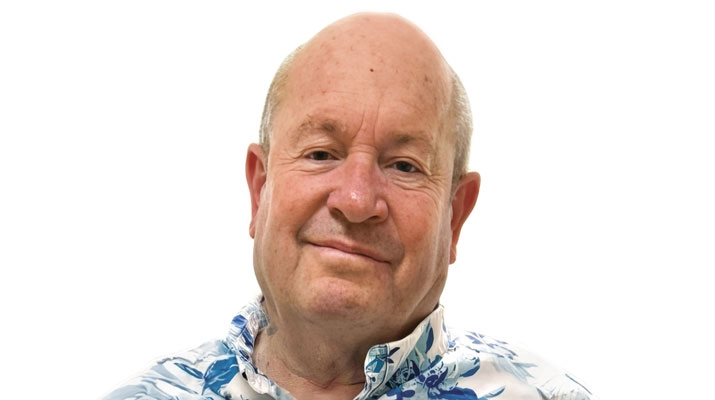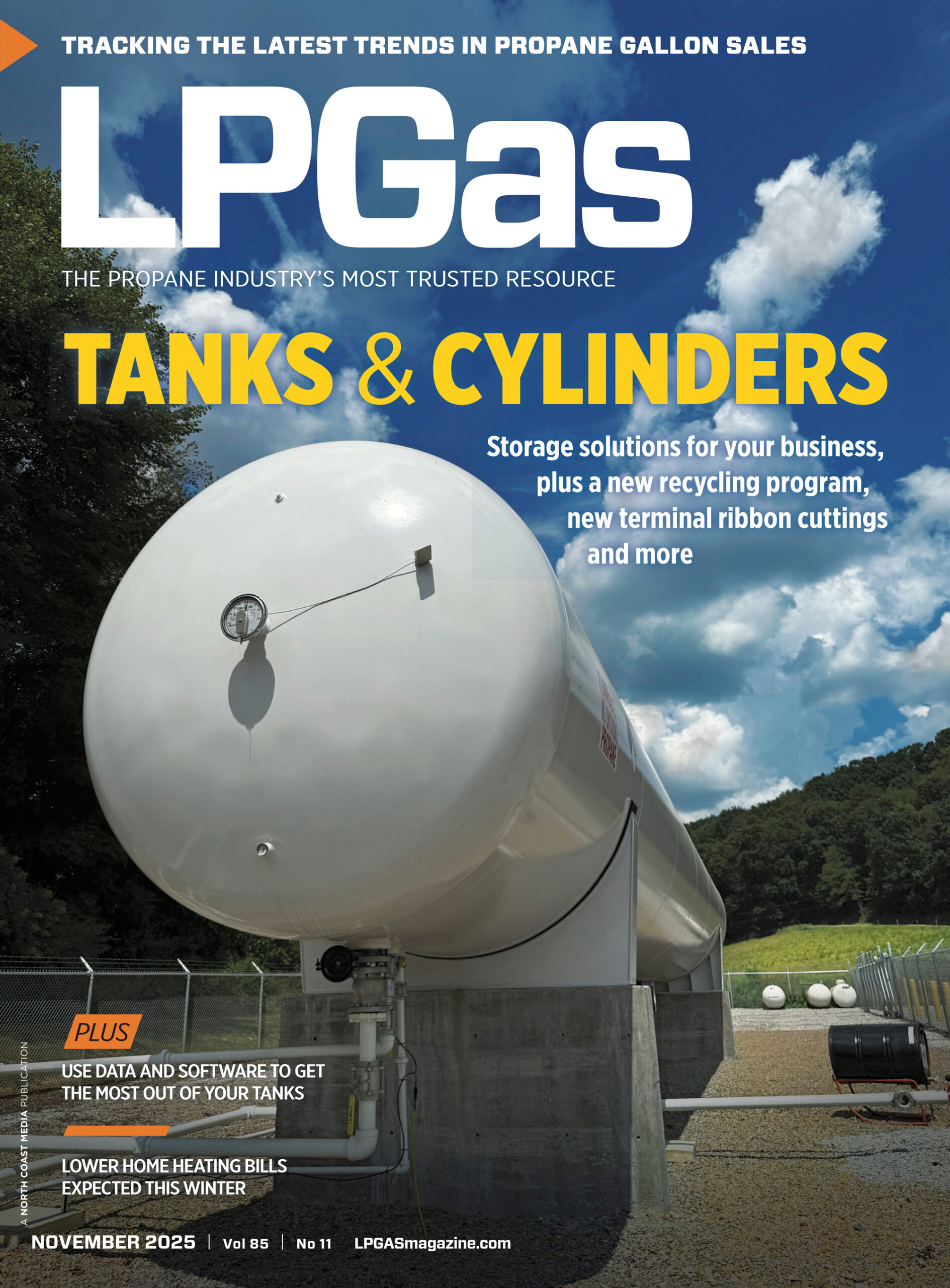Propane Days 2025 recap
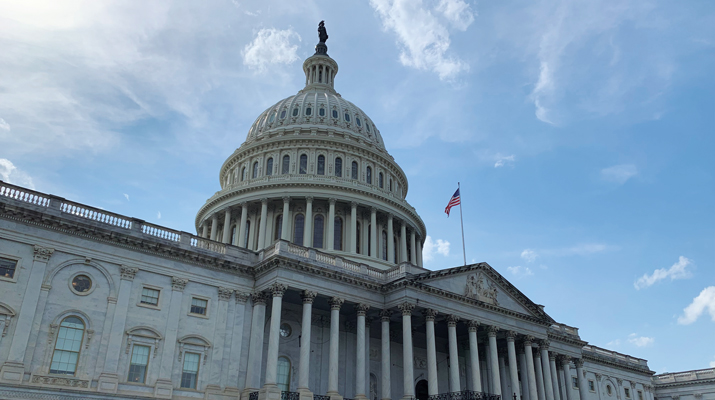
It feels like just yesterday I was at the National Propane Gas Association’s (NPGA) Propane Days 2024.
It was my first event as the new managing editor of LP Gas magazine, barely a month after I joined the team. At the time, I was still trying to wrap my head around the idea that propane was more than just a fuel that my dad used to cook burgers on our grill. Propane Days 2024 was a whirlwind of new faces and new information. I don’t think I’d ever shaken so many hands in such a short time. It was also my first time in Washington, D.C., so I was trying to take in the glory of our nation’s capital, too.

I returned home from that trip both exhausted and exhilarated. I was tired, sure, but I was also excited to write about my experience and start my new role covering the propane industry.
When it came time to register for Propane Days 2025, it was hard to believe that it had already been a year since my first trip. As cliché as it is to say, time really does fly.
And so, on the evening of June 8, Brian Richesson and I arrived in Washington, D.C., for my second Propane Days event, ready for another exhausting and exhilarating few days.
A different vibe
The first thing I noticed at Propane Days 2025 was how different it was from last year – the energy had shifted in a way.
In the past year, the NPGA had achieved a lot of its goals. Riding on those victories, there was a vibe of success and optimism in the air, and a confidence that the industry could keep pushing its goals further.
There was also the feeling that a weight had been lifted from people’s shoulders, which can be attributed to the new power balance in Washington. With Republicans controlling the White House and Congress, and the president’s pledge to “unleash American energy,” the propane industry found itself with good friends in high places – a change of pace from the last four years under Democratic leadership, which is largely against fossil fuels.
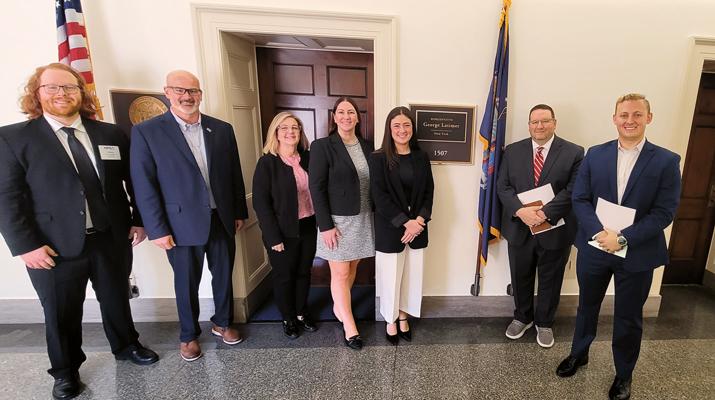
LP Gas editors split up – Covering Ohio and New York
At Propane Days, industry members break into groups by state to meet with their congressional representatives. NPGA staff members provide support in some of the meetings.
Based in Cleveland, LP Gas usually follows the Ohio delegation for these meetings. This year, instead of joining Richesson with the Ohio group, I tagged along with the New York group, which ended up being quite a different experience.
Last year, the Ohio group mostly met with the offices of Republican representatives, who are largely friendly toward fuels like propane. Even if they don’t know much about propane specifically, it’s generally not a difficult task to get Republicans to vote for propane-friendly legislation.
New York, on the other hand, is a Democratic stronghold, so the New York team had its work cut out for it.
We mostly met with the staffers of Democratic representatives. But the group – composed of Andrew Vogl of Ray Murray Inc., Amy Mason of Capitol Hill Management Services, and Jim Rushing, Kathy Johnson and Kevin Pollack of EDP – was ready and eager for the uphill battle on Capitol Hill.
Advocating for energy choice
In addition to being a heavily Democratic state, New York is also a battleground for one of the hottest topics in the propane industry right now – energy choice. In 2023, New York “became the first state to ban natural gas appliances in most new buildings by as early as 2026,” according to the NPGA’s issue brief on consumer energy choice.
But New York isn’t the only place trying to ban gas. Across the country, some states and localities have enacted laws and regulations to limit consumers’ ability to power their homes and other buildings with fuels like propane. Specifically, these laws forbid any newly constructed buildings from using fossil fuels.
Needless to say, these laws don’t sit well with the propane industry, so one of the NPGA’s two main initiatives this year was for consumer energy choice. The idea is to “ban the bans,” so to speak, with the association pushing for the Energy Choice Act, a piece of federal legislation that would prevent states and local governments from banning gas infrastructure and protect consumers’ access to propane.
To advocate for the Energy Choice Act, the New York group largely focused on informing the congressional staffers that propane is a clean energy source. Like many people whose homes don’t run on propane, many of the staffers with whom we met didn’t know much about propane beyond “it goes in my grill.” Once the group explained to the staffers that propane is a low-emission source of energy, it was largely met with positive responses.
After all, much of the reasoning behind the movement against fossil fuels is that they emit carbon dioxide and pollution. When someone understands that propane is a low-emission and clean-burning fuel, it’s easier for them to protect consumer access to it.
– Chris Markham
Advocating for LIHEAP funding
The photo captures the essence of Propane Days – a group of propane industry members huddling in a U.S. House of Representatives office building hallway prior to their next meeting with elected officials.
Worthington Enterprises’ Mike Verne, Bobby Weinberg, Warren Patterson and Chad Newsome listen intently to Alex Boehnke, vice president of legislative and corporate affairs for the Ohio Council of Retail Merchants, who also supports the Ohio Propane Gas Association (OPGA) in its efforts to educate congressional leaders. Worthington is a Columbus, Ohio-based tank manufacturer.

As a member of the OPGA delegation participating in this year’s Propane Days, I happened to be standing nearby. You can bet that Boehnke was imparting some of his knowledge – nearly nine years with the Ohio groups – in between meetings on how best to communicate with legislators.
“Most legislators genuinely want to learn more about the businesses and industries in their districts. That’s why I always encourage members of the OPGA to talk about what they know best: their own business and the propane industry,” Boehnke shares with LP Gas.
“Sharing personal stories, challenges and successes helps humanize the issues and makes them more relatable and memorable.”
In all, more than 250 propane industry members from 44 states registered for Propane Days and joined about 300 meetings in the nation’s capital this year, according to NPGA. About 10 of those meetings took place in House and Senate offices of Ohio congressional leaders.
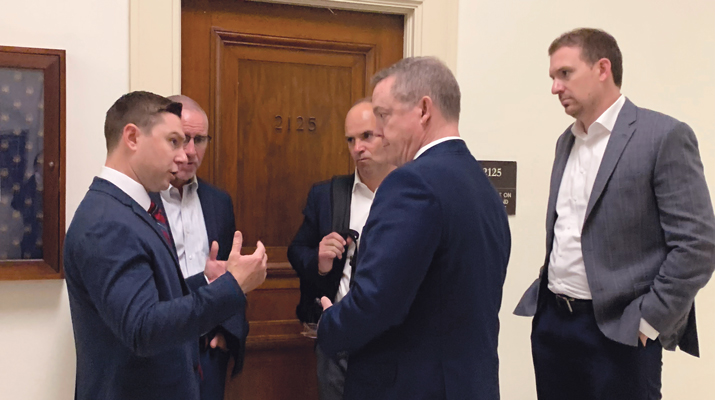
OPGA had strong representation this year, with more than 10 members and association leaders making their way to Washington, D.C. We split into two groups for the meetings, which focused on two key issues: protecting consumer energy choice and preserving Low Income Home Energy Assistance Program (LIHEAP) funding.
The goal was straightforward: to identify the two issues and make the ask.
“There are good people out there trying to make a positive change in our world,” says Frank Edwards, vice president at Coles Energy and Ohio’s state director with NPGA. “They crave education and knowledge from each visit so they can develop a plan to best serve their constituents.”
LIHEAP helps low-income Americans with their energy bills. Since its inception in 1981, the federal program has enjoyed bipartisan support in Congress, NPGA notes, but its future is in doubt after the White House proposed eliminating all LIHEAP funding in its fiscal year 2026 budget.
According to NPGA, LIHEAP serves nearly 6 million households, with 5 million receiving heating assistance, 1.4 million receiving crisis assistance in emergencies and 927,000 receiving cooling assistance. In fiscal year 2025, Congress approved $4.1 billion for the program (see page 9), which equates to an average of about $695 per household.
Steve Kaminski, president and CEO of NPGA, called the issue an “area of concern” for the propane industry as he estimates that 5 percent of all propane sales come from LIHEAP funds.
“What we’re going to do alongside every other energy industry is argue to Congress that LIHEAP needs to be funded,” he says a day before Capitol Hill meetings. “It’s a heat or eat issue.”
In addition to the program funding cuts, all staff members at the Department of Health and Human Services, which administers the program with state governments through a federally funded block grant structure, were terminated this year, Kaminski adds.
The topic of LIHEAP drew a passionate response from a staffer in the office of U.S. Rep. Greg Landsman, an Ohio Democrat, in favor of keeping the program intact. While socioeconomic issues draw bipartisan support in Washington, we heard that the main obstacle to reinstating LIHEAP is getting enough Republican members of Congress to challenge the White House’s proposed cuts. The topic also drew a strong response from Josh Greene, operations manager at Arrick’s Propane, who says the topic of LIHEAP made this year’s trip to D.C. more meaningful.
“So many of our customers in rural areas rely on this assistance to heat their homes,” he says. “My grandma is a great example of the program working well. She is 88 years old and draws a small Social Security check. She manages her money well but would never be able to afford to heat and cool her home without the assistance of LIHEAP funds. Hopefully the efforts of the industry telling stories like this to our legislators will result in the program being funded for the coming year.”
Patterson of Worthington felt good that Ohio and the rest of the Propane Days attendees made a positive difference for the industry. As an example, when he returned home, he learned from his colleagues at Worthington that a Propane Days visit with Sen. Bernie Moreno went over well.
“We know the message was heard,” Patterson says. “With all of the audiences we had, I felt like we had an actual dialogue with them.”
– Brian Richesson
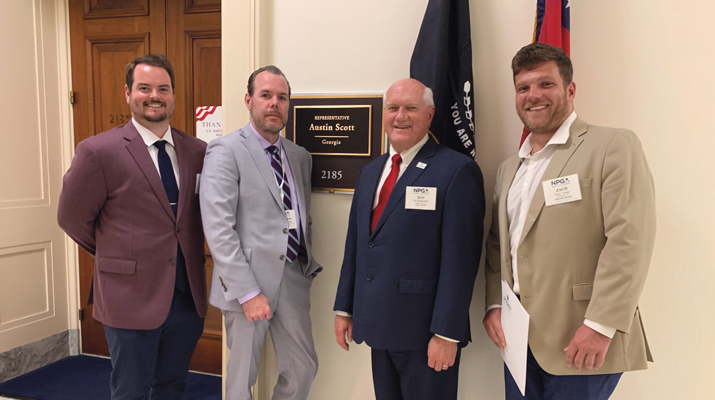

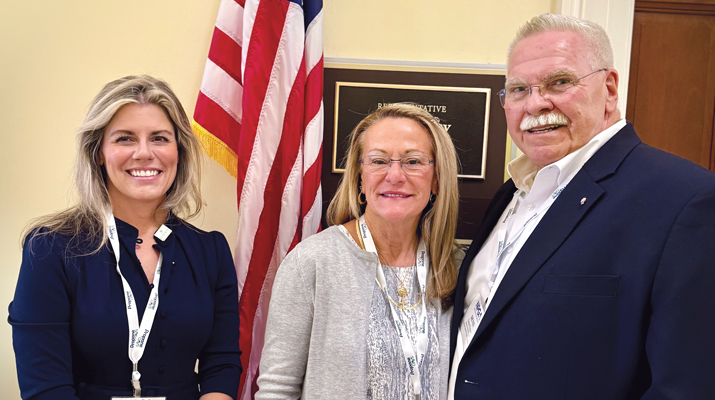
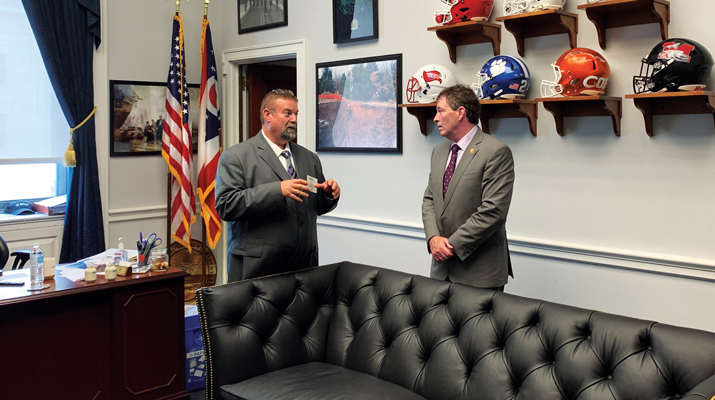
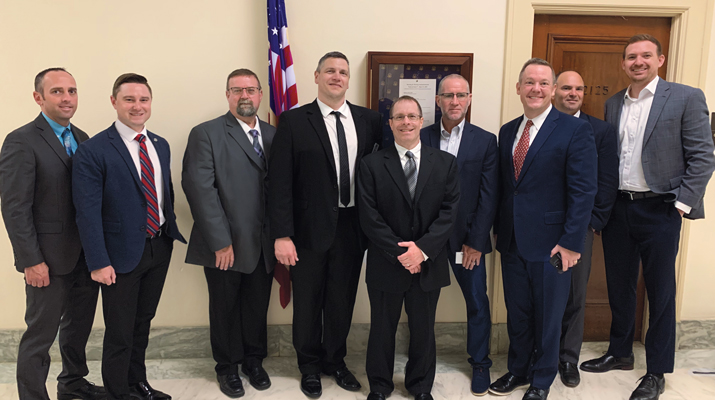
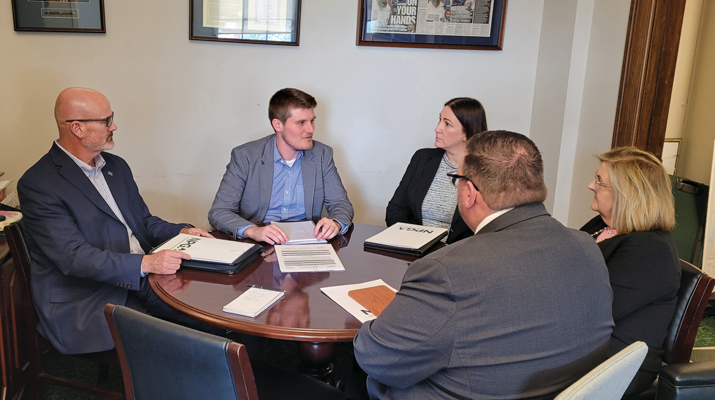
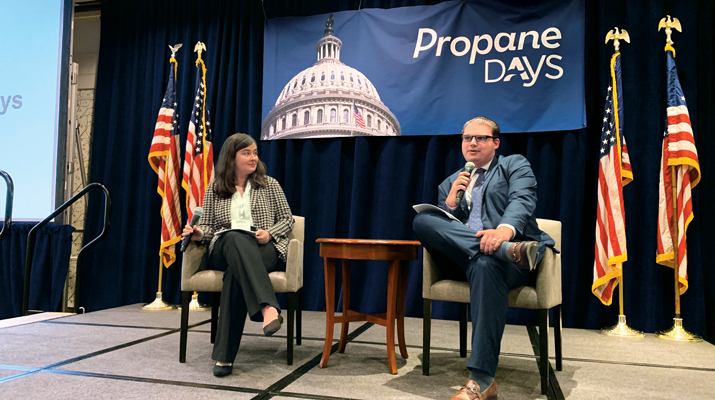
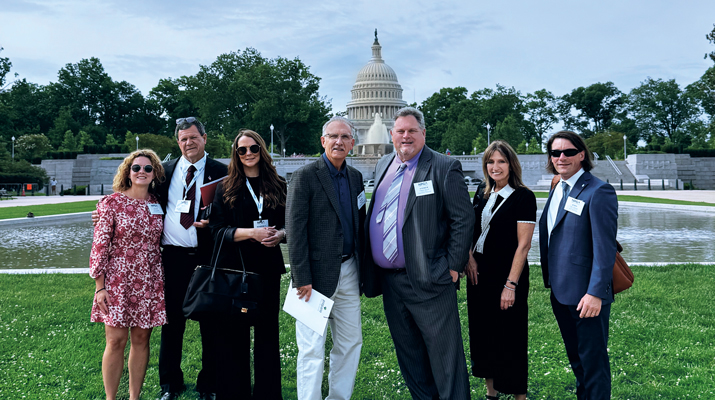
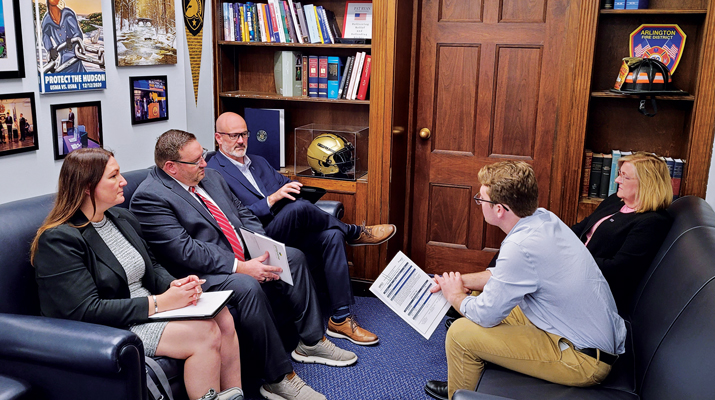
Related Articles
Share your stories to connect with elected officials
New editor recounts first Propane Days experience
Propane Days returns to congressional offices for in-person meetings









